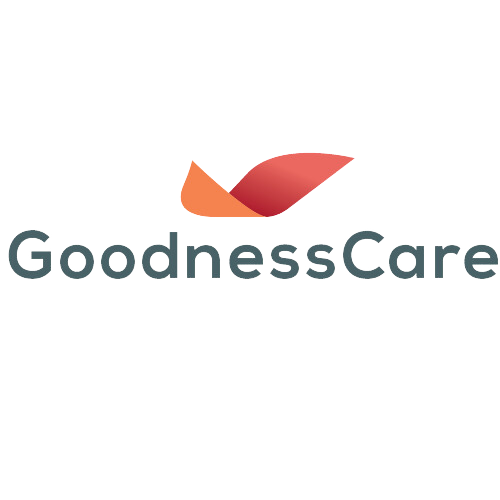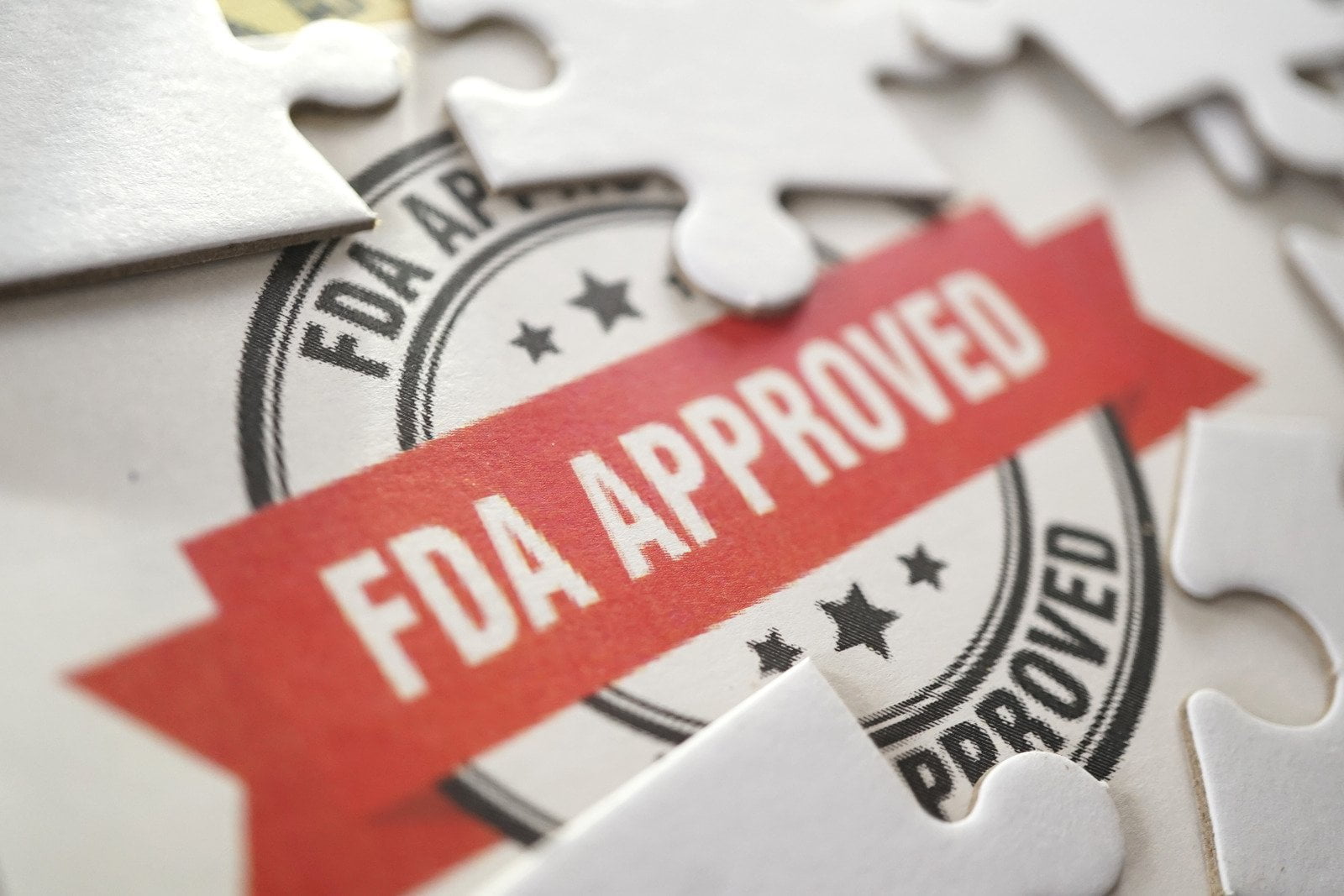One of the critical objectives for pharmaceutical companies is to increase the number of healthcare professionals (HCPs) prescribing their products and to enhance the frequency of prescriptions for specific products. This goal requires a multifaceted approach that combines effective relationship-building, targeted education, and strategic marketing initiatives. This article explores five strategies pharma companies can employ to achieve these objectives.
1. Build Strong Relationships with Healthcare Professionals
Building and maintaining strong relationships with healthcare professionals is the foundation of successful collaboration. Pharma companies should prioritize establishing a rapport with HCPs, fostering trust and loyalty.
Here are key strategies to build strong relationships with healthcare professionals:
- Open Communication: Initiating and maintaining open lines of communication with HCPs is paramount. This involves regular interactions through various channels, including in-person meetings, virtual conferences, webinars, and newsletters. These interactions should go beyond promoting products and focus on fostering a genuine exchange of information. Pharma representatives should actively listen to the concerns and needs of HCPs, creating a beneficial dialogue for both parties.
- Providing Value through Education: Offering valuable educational resources is a powerful way to build relationships. Pharma companies can organize workshops, seminars, and training sessions that offer insights into the latest medical advancements, treatment options, and product details. By positioning themselves as educators, companies become valuable partners in the continuous learning journey of HCPs.
- Tailored Engagement Strategies: Recognizing that different HCPs have distinct preferences and needs, tailoring engagement strategies is essential. Understanding the specific roles, specialties, and interests of HCPs allows pharma companies to customize their interactions. This could involve personalized content delivery, specialized training modules, or targeted communications that resonate with the unique challenges each group of HCPs faces.
- Building Trust and Credibility: Trust is a cornerstone of any successful relationship. Pharma companies should prioritize transparency, honesty, and reliability in their interactions with HCPs. This involves providing accurate and up-to-date information, being transparent about product features and limitations, and delivering on promises. Building trust takes time, but it is fundamental for establishing a long-lasting and fruitful partnership.
- Demonstrating Commitment to Patient Outcomes: HCPs are inherently dedicated to improving patient outcomes. Aligning with this commitment can strengthen the relationship between pharma companies and HCPs. By showcasing a shared dedication to enhancing patient well-being, companies demonstrate that their products are not just commodities but valuable contributors to healthcare advancements.
- Feedback and Collaboration: Creating a feedback loop and fostering collaboration contribute to relationship-building. Actively seeking input from HCPs on product efficacy, educational initiatives, and overall collaboration can enhance the partnership. Collaborative efforts, such as joint research projects or participation in clinical trials, demonstrate a commitment to mutual success.
- Customizing Support: Recognizing that different HCPs may require varying levels and types of support is crucial. Customizing support services based on the individual needs and preferences of HCPs can lead to a more personalized and effective partnership. This could include tailored marketing materials, dedicated support personnel, or specialized resources to address specific challenges.
- Respecting Professional Boundaries: While building relationships, it’s imperative to respect the professional boundaries of healthcare professionals. Understanding the ethical considerations and guidelines governing interactions with HCPs ensures the relationship is built on mutual respect. Pharma companies should adhere to industry regulations and prioritize ethical conduct in all engagements.
- Long-Term Relationship Building: Building relationships with healthcare professionals is not a one-time effort but an ongoing process. Long-term relationship building involves consistent engagement, follow-ups, and adapting strategies based on evolving needs. Pharma companies should view their interactions with HCPs as a journey rather than a single transaction, aiming for sustained collaboration.
- Providing Support Beyond Products: Beyond promoting pharmaceutical products, companies can provide additional support to healthcare professionals. This could involve offering resources such as tools for patient education, access to online communities for knowledge-sharing, or assistance in navigating regulatory requirements. By providing comprehensive support, pharma companies are valuable partners in the healthcare ecosystem.
2. Tailor Educational Initiatives to Address Knowledge Gaps
Understanding the knowledge gaps of healthcare professionals is crucial for targeted educational initiatives. By tailoring educational content to address specific gaps, pharma companies can enhance HCPs’ understanding and confidence in prescribing their products.
Here’s how to implement this strategy:
- Conduct a Comprehensive Needs Assessment: A comprehensive needs assessment is crucial before tailoring educational initiatives. This involves understanding the knowledge levels, preferences, and challenges healthcare professionals face. Surveys, interviews, and data analysis can help identify specific gaps in their understanding, ensuring that educational efforts are focused on the most relevant areas.
- Identify Key Knowledge Gaps: Once the needs assessment is complete, identify the key knowledge gaps among healthcare professionals. These gaps could range from understanding new treatment protocols to lacking information about the latest pharmaceutical advancements. Prioritize these gaps based on their impact on patient care and the potential influence on prescribing behavior.
- Customize Content for Specific Audiences: Tailoring educational initiatives involves creating customized content for specific audiences within the healthcare profession. Different healthcare professionals, such as physicians, nurses, or pharmacists, may have distinct knowledge needs. Customize content to align with their roles, specialties, and areas of expertise, ensuring that the educational materials are relevant and resonate with their professional context.
- Utilize Multiple Learning Formats: People have diverse learning preferences, so delivering educational content in various formats is essential. Some healthcare professionals prefer written materials, while others benefit more from interactive workshops, webinars, or hands-on training. Utilize a mix of formats to cater to different learning styles and make the educational initiatives more accessible and engaging.
- Offer Progressive Learning Modules: Develop progressive learning modules catering to different expertise levels. Some healthcare professionals may be well-versed in certain areas, while others may seek foundational knowledge. Offering modules that range from basic to advanced allows individuals to choose content that aligns with their current understanding and progressively builds their expertise.
- Incorporate Real-World Case Studies: To make educational initiatives more practical and applicable, incorporate real-world case studies. Case studies provide healthcare professionals with concrete examples of how pharmaceutical products or treatments have been applied in different clinical scenarios. This approach helps bridge the gap between theoretical knowledge and real-world applications, making the learning experience more relevant.
- Interactive Learning Opportunities: Engage healthcare professionals through interactive learning opportunities. This could include virtual simulations, role-playing exercises, or scenario-based discussions. Interactive elements enhance engagement, allow for the application of knowledge in a controlled environment, and facilitate a deeper understanding of complex concepts.
- Provide Accessible Resources: Ensure that educational resources are accessible to healthcare professionals. This involves utilizing digital platforms, creating user-friendly interfaces, and offering downloadable materials. Accessibility contributes to the convenience of learning, allowing healthcare professionals to access information at their own pace and convenience.
- Encourage Continuous Learning: Tailored educational initiatives should be a collaborative effort. Encourage continuous learning by providing ongoing resources, updates, and opportunities for professional development. This can include regular newsletters, webinars on emerging trends, or access to a regularly updated online knowledge repository.
- Gather Feedback for Improvement: Establish mechanisms to gather feedback on educational initiatives. Encourage healthcare professionals to provide insights on the content’s effectiveness, the delivery format, and areas needing further clarification. This feedback loop is invaluable for continuous improvement, allowing pharmaceutical companies to refine their educational strategies based on real-world input.
- Collaborate with Key Opinion Leaders (KOLs): KOLs bring credibility and expertise; their involvement in educational initiatives can enhance the content’s authenticity. Work with KOLs to address specific knowledge gaps and leverage their insights to create impactful educational content.
- Measure Impact on Prescribing Behavior: Beyond filling knowledge gaps, pharmaceutical companies should aim to measure the impact of educational initiatives on prescribing behavior. This involves tracking changes in prescription patterns, adherence to treatment protocols, and overall engagement with the educational content. Measuring impact provides valuable data on the effectiveness of tailored educational strategies.
3. Provide Comprehensive Product Information
HCPs need to have in-depth knowledge about pharmaceutical products to prescribe them confidently. Pharma companies should ensure comprehensive and easily accessible product information is available to healthcare professionals. Here’s how to effectively offer comprehensive product information:
- Detailed Product Profiles: Create detailed profiles for each pharmaceutical product in your portfolio. These profiles should include information such as the product’s active ingredients, mechanism of action, indications, contraindications, dosage and administration guidelines, potential side effects, and relevant clinical studies. This comprehensive overview ensures that healthcare professionals thoroughly understand the product.
- Clinical Evidence and Studies: Include a robust section on clinical evidence and studies. Present the results of clinical trials, real-world studies, and any relevant research supporting the pharmaceutical product’s efficacy and safety. Highlight key findings, statistical significance, and practical implications to reinforce the product’s credibility.
- Mode of Action and Pharmacology: Provide in-depth information about the product’s mode of action and pharmacology. Explain how the product interacts with the body, its target receptors or pathways, and the physiological impact it aims to achieve. This detailed insight helps healthcare professionals grasp the scientific rationale behind the product’s therapeutic effects.
- Comparative Analysis: Include a comparative analysis of your product against similar medications in the market. Highlight the unique selling points, advantages, and differentiation factors that set your product apart. This information aids healthcare professionals in making informed decisions when choosing available treatment options.
- Dosage and Administration Guidelines: Detail the recommended dosage and administration instructions. Specify the appropriate dose, how often it should be taken, and the preferred administration methods. Additionally, include guidance on adjusting doses for specific groups, like children or older adults, and any special considerations for patients with underlying health conditions.
- Safety Information and Adverse Reactions: Present comprehensive safety information, including potential adverse reactions and precautions. Communicate any known side effects, interactions with other medications, and contraindications. This transparency is essential for healthcare professionals to assess the risk-benefit profile and make informed decisions based on patient-specific factors.
- Patient Counseling Materials: Develop patient counseling materials that healthcare professionals can share with their patients. These materials should be clear, concise, and patient-friendly, covering key information about the medication, its purpose, proper usage, potential side effects, and what to do in case of adverse reactions. Well-informed patients are more likely to adhere to treatment plans.
- Formulation and Delivery: Include details about the formulation of the product and its delivery method. This is particularly important for medications with multiple formulations (e.g., tablets, injections, topical forms). Understanding the available formulations helps healthcare professionals tailor treatment plans to individual patient needs and preferences.
- Regulatory Compliance and Approvals: Provide information on regulatory compliance and approvals. Highlight the regulatory pathways the product has undergone, approvals from relevant health authorities, and any post-marketing surveillance commitments. This information instills confidence in the product’s safety and efficacy.
- Interactive Training Modules: Develop interactive training modules for healthcare professionals to deepen their understanding of the product. These modules can include virtual demonstrations, case studies, and scenarios that simulate real-world prescribing situations. Interactive learning enhances engagement and ensures effective knowledge transfer.
- Regular Updates and Alerts: Commit to providing regular updates and alerts regarding the product. Keep healthcare professionals informed about new safety data, label changes, or additional indications. Timely updates demonstrate a commitment to transparency and ongoing communication.
- Accessible Information Platforms: Ensure that product information is accessible through multiple platforms. Whether through a dedicated online portal, mobile applications, or printed materials, healthcare professionals should be able to access the information they need easily. Accessibility contributes to efficient decision-making in clinical settings.
4. Implement Targeted Marketing Strategies
Effective marketing strategies are essential to increase the visibility of pharmaceutical products among healthcare professionals. Tailor your marketing efforts to highlight your offerings’ unique features and benefits.
Here’s an exploration of how to implement such strategies:
- Identify and Understand the Target Audience: Identify the target audience within the healthcare professional community. Understand their specialties, roles, preferences, and the specific challenges they face. Tailor marketing strategies to resonate with the unique needs of each segment, whether it’s general practitioners, specialists, or key decision-makers.
- Segmentation for Personalization: Utilize segmentation to personalize marketing efforts. Segment the target audience based on geographic location, practice size, prescribing behaviors, and demographics. Personalization enhances engagement by delivering content and messages directly relevant to each segment’s interests and concerns.
- Utilize Data Analytics: Leverage data analytics to gain insights into healthcare professionals’ behaviors and preferences. Analyze data from previous marketing campaigns, engagement metrics, and prescribing patterns. This data-driven approach helps refine strategies, identify high-potential segments, and optimize resource allocation for maximum impact.
- Multi-Channel Marketing Approach: Adopt a multi-channel marketing approach to reach healthcare professionals through various communication channels. This includes digital platforms, social media, email marketing, direct mail, conferences, webinars, and traditional print media. A diversified approach ensures the message is delivered through channels preferred by different target audience segments.
- Content Customization: Customize content to align with healthcare professionals’ specific interests and informational needs. Tailor messaging to highlight the clinical benefits, safety profiles, and unique selling points of pharmaceutical products. Ensure that content is presented in a clear, concise, and scientifically credible manner to resonate with the professional expertise of the audience.
- Educational Content and Thought Leadership: Develop educational content that positions the pharmaceutical company as a thought leader. Share insights into emerging trends, research findings, and practical applications of pharmaceutical products. Educational content builds credibility and fosters a relationship of trust, positioning the company as a valuable source of information for healthcare professionals.
- Engagement through Digital Platforms: Harness the power of digital platforms for targeted engagement. Establish a strong online presence through a user-friendly and informative website. Utilize social media platforms to share relevant content, engage in conversations, and provide a platform for healthcare professionals to connect with the company.
- Precision Targeting with Paid Advertising: Implement precision targeting through paid advertising. Utilize targeted online advertising, including pay-per-click (PPC) campaigns and sponsored content, to reach specific segments of healthcare professionals. This approach ensures that promotional efforts are directed toward those most likely interested in pharmaceutical products.
- Event Sponsorship and Participation: Sponsor and participate in industry events, conferences, and seminars relevant to the target audience. These events provide opportunities for direct engagement with healthcare professionals, showcasing products, and establishing face-to-face connections. Sponsorship enhances visibility and positions the company as a supporter of professional development.
- Incorporate Patient-Centric Messaging: Integrate patient-centric messaging into marketing strategies. Highlight how pharmaceutical products positively impact patient outcomes, improve quality of life, or address unmet medical needs. This approach resonates with healthcare professionals who prioritize the well-being of their patients and encourages them to consider the broader impact of the products.
- Compliance and Regulatory Adherence: Ensure strict adherence to compliance and regulatory guidelines in all marketing activities. The pharmaceutical industry operates within a highly regulated environment, and non-compliance can have severe consequences. Prioritize transparency, accuracy, and ethical practices to build and maintain a trustworthy reputation among healthcare professionals.
- Feedback Mechanisms and Continuous Improvement: Establish feedback mechanisms to gather insights from healthcare professionals. Seek feedback on marketing materials, content relevance, and overall company experience. Use this feedback for continuous improvement, refining strategies based on the evolving needs and preferences of the target audience.
- Measure and Analyze Campaign Performance: Implement robust analytics tools to measure the performance of marketing campaigns. Track key performance indicators (KPIs) such as engagement, conversion, and return on investment (ROI). Analyze the data to identify successful strategies, areas for improvement, and opportunities for refinement in future campaigns.
- Adaptability to Industry Changes: Remain adaptable to changes in the pharmaceutical industry and healthcare landscape. Stay informed about shifts in regulations, emerging technologies, and industry trends. This adaptability ensures that marketing strategies remain relevant and responsive to the dynamic nature of the healthcare environment.
5. Implement Data-Driven Approaches
Leverage data analytics to gain insights into prescription patterns, market trends, and the effectiveness of your marketing initiatives. By adopting a data-driven approach, pharma companies can refine their strategies for maximum impact.
Here’s how to implement data-driven approaches:
- Utilize Customer Relationship Management (CRM) Systems: Implement robust CRM systems to capture and analyze data related to interactions with HCPs. These systems provide a centralized repository for customer data, including prescribing patterns, communication history, and preferences. Analyzing this information helps understand individual HCPs’ needs and tailor engagement strategies accordingly.
- Prescription Data Analysis: Analyze prescription data to gain insights into prescribing patterns, trends, and product preferences among healthcare professionals. Pharmaceutical companies can refine their marketing and educational strategies to align with HCPs’ interests by understanding which products are frequently prescribed and in what contexts.
- Segmentation Based on Data Insights: Use data-driven insights to segment healthcare professionals into meaningful categories. Segmentation allows for more targeted and personalized approaches. Factors such as specialty, prescription behaviors, and engagement history can inform segmentation strategies, enabling tailored communication for each segment.
- Predictive Analytics for Prescribing Behaviors: Leverage predictive analytics to forecast prescribing behaviors. By analyzing historical data and trends, companies can develop models that predict future prescribing behaviors of HCPs. This enables proactive planning and allows for the anticipation of potential shifts in the market.
- Personalized Content Recommendations: Use data to personalize content recommendations for healthcare professionals. Analyzing HCPs’ engagement history and preferences allows companies to suggest relevant articles, research papers, or educational materials. Personalized content recommendations enhance the value of interactions and cater to individual learning preferences.
- Feedback Analysis for Product Improvement: Analyze feedback data from HCPs to identify areas for product improvement. Understanding the challenges or concerns raised by healthcare professionals provides valuable insights. This data-driven approach contributes to product refinement, ensuring that pharmaceutical offerings meet the market’s evolving needs.
- Performance Analytics for Marketing Campaigns: Employ performance analytics to evaluate the effectiveness of marketing campaigns. Analyzing data on campaign reach, engagement rates, and conversion metrics helps assess the impact of marketing initiatives. Companies can then optimize strategies based on the success indicators identified through data analysis.
- Adaptive Marketing Strategies: Implement adaptive marketing strategies based on real-time data. In a rapidly evolving landscape, agility is crucial. Data-driven insights enable companies to adapt marketing messages, channels, and timing to align with current market dynamics and HCPs’ preferences.
- Compliance Monitoring and Reporting: Utilize data-driven tools to monitor and report compliance with regulations. Ensuring compliance is paramount in the pharmaceutical industry. Implementing data-driven solutions for compliance monitoring helps companies track adherence to regulatory standards and address any potential issues promptly.
- AI-Powered Insights for Decision-Making: Harness the power of artificial intelligence (AI) for data analysis. AI algorithms can uncover hidden patterns, generate actionable insights, and support data-driven decision-making. Machine learning models can continuously learn from new data, enhancing the accuracy of predictions over time.
Conclusion:
In conclusion, increasing the number of healthcare professionals prescribing your products and boosting the frequency of prescriptions require a strategic and comprehensive approach. By focusing on relationship-building, targeted education, and strategic marketing, pharma companies can position themselves as trusted partners in healthcare. Continuous adaptation to industry trends, ongoing collaboration, and data-driven insights will solidify the company’s standing within the pharmaceutical landscape.





